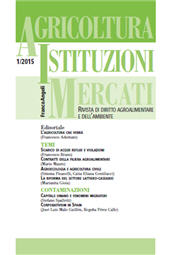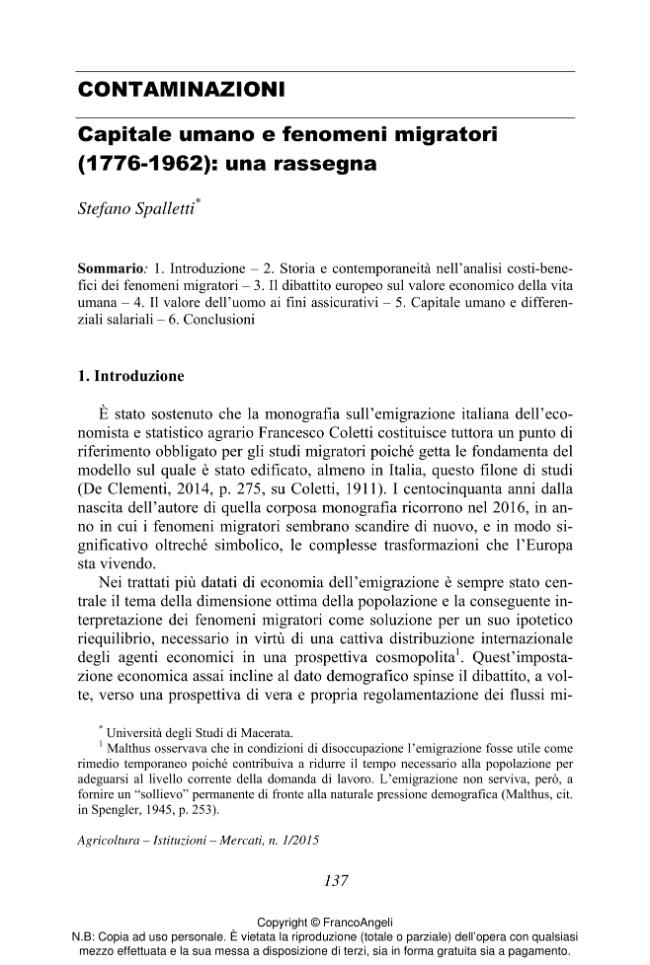Capitale umano e fenomeni migratori (1776-1962) : una rassegna
137-153 p.
L'articolo analizza dal punto di vista storico e teorico il rapporto tra capitale umano e migrazioni. In particolare, descrive un percorso in cui diverse teorie considerano i migranti come agenti economici che, spostandosi geograficamente, tentano di accedere a opportunità di reddito più elevate, incrementando così l'ef¬fetto dei loro guadagni nel ciclo vitale. Tale ricostruzione va dalla comparsa della prima rudimentale teoria del capitale umano di Adam Smith (1776) fino alla moderna prospettiva teorica di Larry Sjaastad (1962), che fa perno sul grado di trasferibilità delle conoscenze e competenze proprio attraverso i fenomeni migratori.
Seguendo questa traiettoria, l'articolo sostiene che i procedimenti che si utilizzano entro la teoria del capitale umano consolidano, anche nell'applicazione ai fenomeni migratori, un approccio metodologico che fa riferimento all'analisi costi-benefici. Oltre che in alcuni riferimenti alla cultura economica classica o addirittura precedente, ciò è individuabile seguendo tre snodi storiografici significativi: il dibattito europeo sul valore economico della vita umana tra Otto e Novecento; il confronto di matrice statunitense sul valore dell'uomo a fini assicurativi negli anni '30; l'analisi sui differenziali salariali decretato dal successo della Chicago School nei primi anni '60. [Testo dell'editore].
The article analyses the historical and theoretical relationship between human capital and migrations. Particularly, it describes theories in which migrants are moving economic agents trying to access higher income opportunities, thereby increasing their earnings in a life-cycle perspective. The review begins with the emergence of the rudimentary human capital theory of Adam Smith (1776) and finishes with the modern perspective of Larry Sjaastad (1962) which focuses on the transferability degree of knowledge and skills through migratory phenomenon. Following this path, the article argues that human capital theory makes use of the methodological approach of the costs-benefits analysis also applied to the migrations phenomenon.
As well as in some references to classical or even to previous economic culture, this idea can be found by following three historiographical joints: the European debate on the economic value of human life, in the 19th and 20th centuries; some US studies upon human value for insurance purposes, in the Thirties; the analysis on wage differentials developed by the Chicago School and its success, in the early Sixties. [Publisher's Text].
Is part of
Agricoltura, istituzioni, mercati : rivista di diritto agroalimentare e dell'ambiente : 1, 2015-
Articles from the same issue (available individually)
-
Information
KEYWORDS
- Immigrazione ed emigrazione, capitale umano, analisi costi-benefici
- Immigration and Emigration, Human Capital, Costs-Benefits Analysis



